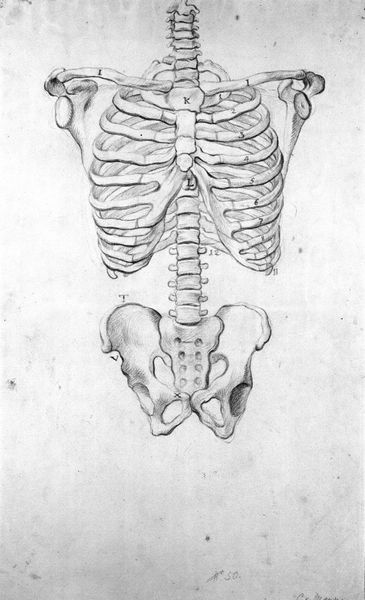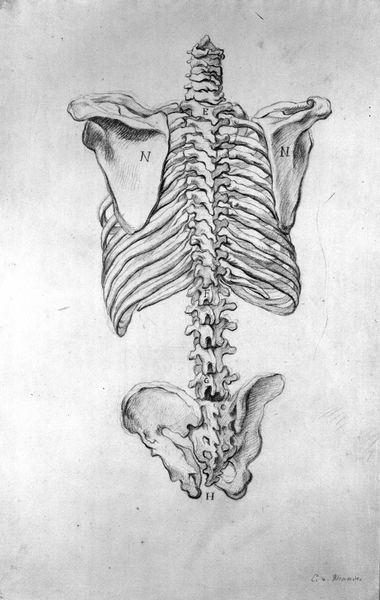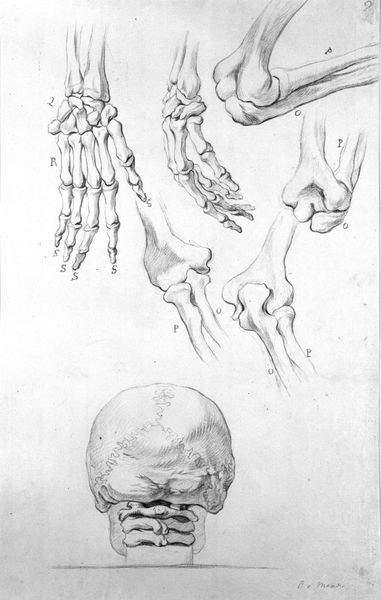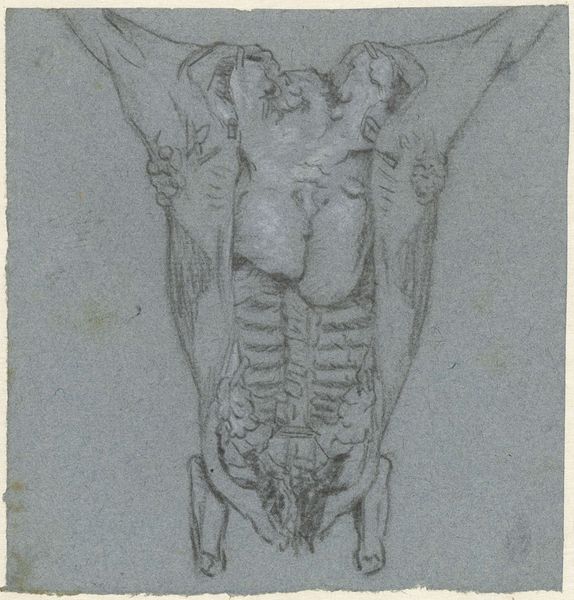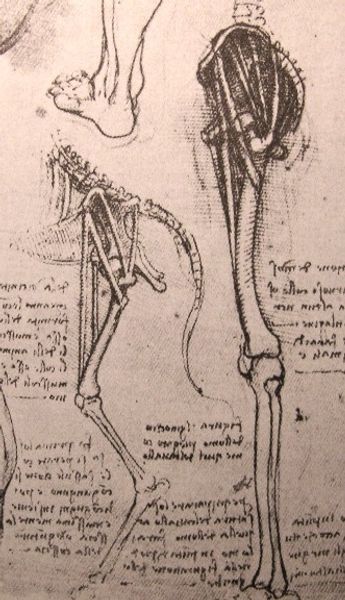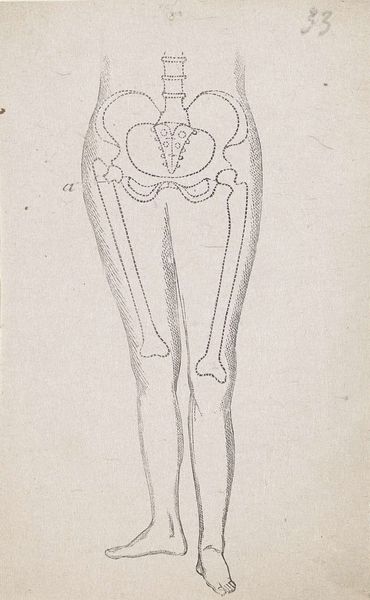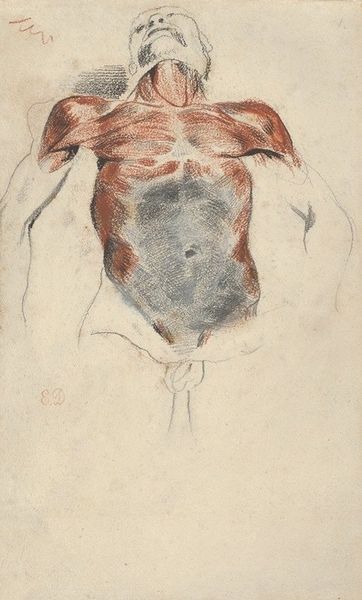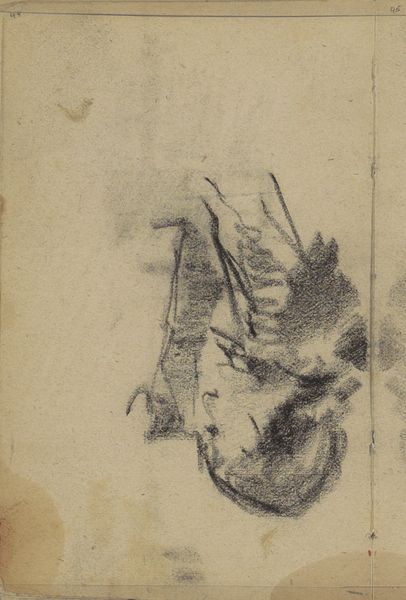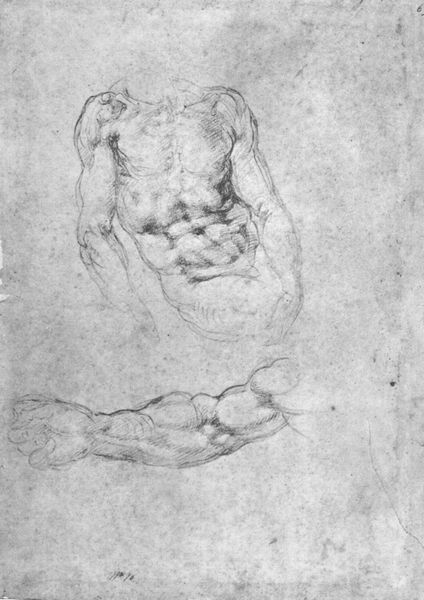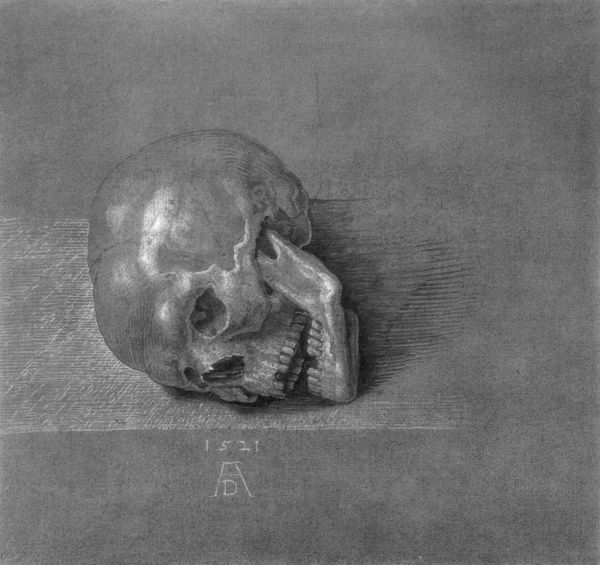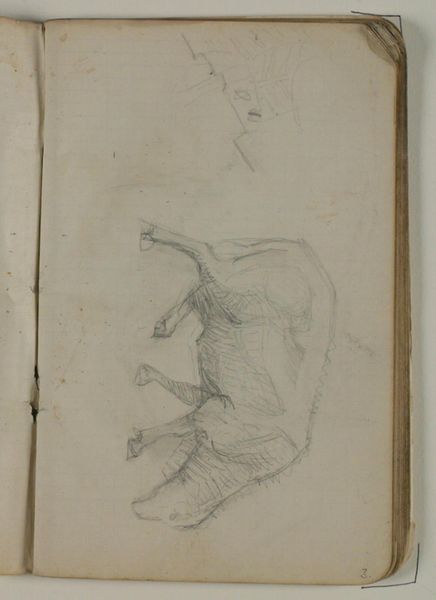
Hånd i profil; fire gengivelser af albueled; rygrad med brystkasse og bækken, frontalt. 1660 - 1663
0:00
0:00
drawing
#
portrait
#
drawing
#
form
#
history-painting
#
academic-art
#
nude
#
realism
Dimensions: 530 mm (height) x 321 mm (width) (bladmaal)
Editor: Here we have Karel van Mander III's drawing, "Hand in profile; four renditions of the elbow joint; spine with rib cage and pelvis, frontal", created sometime between 1660 and 1663. I’m struck by its stark realism. How do you interpret this work within its historical context? Curator: Well, looking at this piece, I think it is crucial to consider what the artist is trying to convey about the body at a time when scientific understanding was rapidly evolving but constrained by social and religious norms. In what ways does this study of anatomy potentially challenge or reinforce power structures within that society? Editor: That's an interesting point. I guess I hadn't considered the potential societal impact of anatomical studies like this. So, is the artist making some kind of statement by depicting the body so frankly? Curator: Potentially. Think about who had access to this kind of knowledge and how it was used. Anatomical drawings like these were often the domain of elite male physicians and artists. Considering the social history of medicine, how might this representation of the body relate to contemporary understandings of gender, class, and perhaps even race? It certainly privileges a Western European ideal. Editor: It does feel very detached, almost clinical. But could it also be read as empowering, as giving agency to the artist to explore the very structure of being human? Curator: Empowerment for whom? It's crucial to examine who benefits from this depiction and who might be marginalized or excluded. And what are the ethics of representation when dealing with bodies, especially considering that the study of anatomy has often been entangled with the exploitation of marginalized communities? Editor: I see your point. I guess I was focusing too much on the artistic merit and not enough on the power dynamics at play. Thanks, that really gives me a new perspective on the piece. Curator: Exactly. It's important to remember that even seemingly objective representations like this are imbued with social and political meaning. This conversation has reminded me how essential interdisciplinary perspectives are in art historical analysis.
Comments
No comments
Be the first to comment and join the conversation on the ultimate creative platform.
